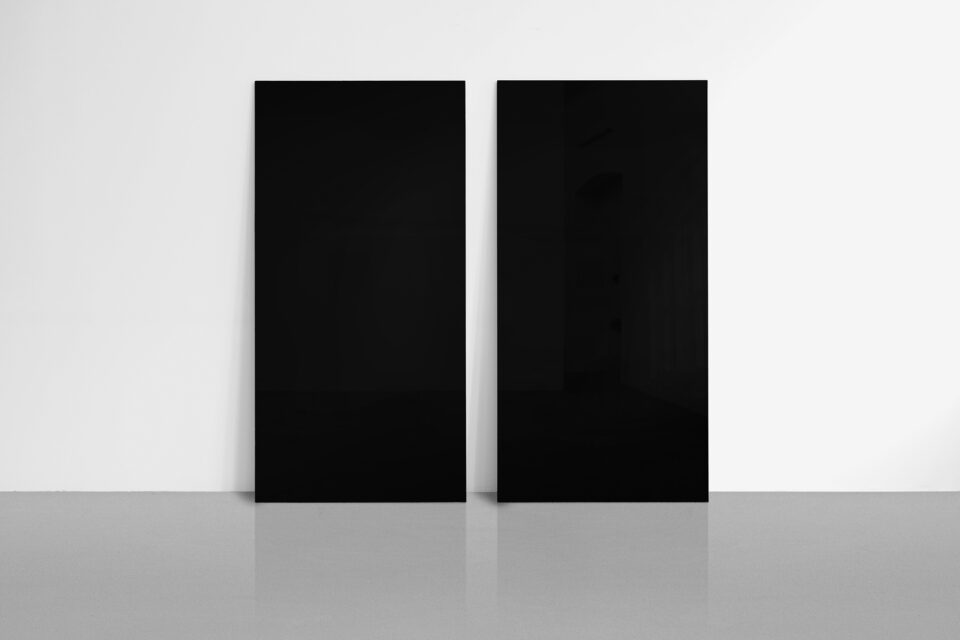Beyond Black
Andrés Ramírez Gaviria’s Beyond Black (2010), is a “nano-size grid on glass,” a work in which we see a black monochrome surface, and we are told that it is—at the level of one-billionth of a meter—something much more complex, consisting of a tight grid of invisible-to-the-eye lines. At the nanometer level, the grid we cannot see underpins this apparent blackness, destabilizing the visual information our eyes perceive. Once we are told that something is beneath that impenetrable black, that it breaks down, we are beset by more existential questions. This is a poignant metaphor for artistic process, for history writing, for information technology and how we understand it, for social and racial categories. There are countless things we cannot immediately see.
We have to trust that the nanometer grid exists under the blackness. Maybe it doesn’t matter if it is actually there or not. We decide to agree that it is there.
– Laura August
Beyond Black (2010 -) appears innocent —a shiny black panel that reflects the image of the viewer. From this perspective, Beyond Black has a narcissistic appeal. Unbeknownst to the viewer, however, Beyond Black is actually a nanoscale grid—an order only perceptible to humans with the aid of technology. Like many of Gaviria’s works, Beyond Black evokes a secret world, but in this case, order is hidden in plain sight, a kind of open secret. Presciently, Beyond Black shows that in a post-Snowden world, we live in a world of black boxes and open secrets. Beyond Black can be compared to the ultimate code system; the highly classified NSA BLACKER encrypted communication system. Up until the late 1980s, in the world of intelligence agencies there were two worlds: red and black. Red is open and informative—plaintext. Black is closed and seemingly meaningless—ciphertext. Gaviria’s Beyond Black explodes this dichotomy, suggesting that there are codes and orders more black than black, or, blacker. In fact, BLACKER was developed to be exactly this—BLACKER is more black than black, or “beyond black.”
– Quinn DuPont

